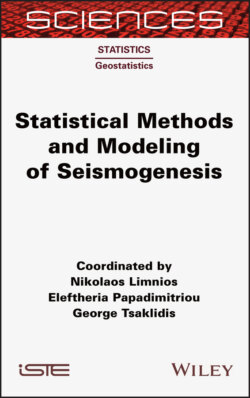Читать книгу Statistical Methods and Modeling of Seismogenesis - Eleftheria Papadimitriou - Страница 2
Table of Contents
Оглавление1 Cover
2 Title Page
3 Copyright
4 Preface
5 1 Kernel Density Estimation in Seismology 1.1. Introduction 1.2. Complexity of magnitude distribution 1.3. Kernel estimation of magnitude distribution 1.4. Implications for hazard assessments 1.5. Interval estimation of magnitude CDF and related hazard parameters 1.6. Transformation to equivalent dimensions 1.7. References
6 2 Earthquake Simulators Development and Application 2.1. Introduction 2.2. Development of earthquake simulators in the seismological literature 2.3. Conceptual evolution of a physics-based earthquake simulator 2.4. Application of the last version of the simulator to the Nankai mega-thrust fault system 2.5. Appendix 1: Relations among source parameters adopted in the simulation model 2.6. Appendix 2: Outline of the simulation program 2.7. References
7 3 Statistical Laws of Post-seismic Activity 3.1. Introduction 3.2. Earthquake productivity 3.3. Time-dependent distribution of the largest aftershock magnitude 3.4. The distribution of the hazardous period 3.5. Conclusion 3.6. References
8 4 Explaining Foreshock and the Båth Law Using a Generic Earthquake Clustering Model 4.1. Introduction 4.2. Theories related to foreshock probability and the Båth law under the assumptions of the ETAS model 4.3. Foreshock simulations based on the ETAS model 4.4. Simulation of the Båth law based on the ETAS model 4.5. Conclusion 4.6. Acknowledgments 4.7. References
9 5 The Genesis of Aftershocks in Spring Slider Models 5.1. Introduction 5.2. The rate-and-state equation 5.3. The Dieterich model 5.4. The mechanics of afterslip 5.5. The two-block model 5.6. Conclusion 5.7. References
10 6 Markov Regression Models for Time Series of Earthquake Counts 6.1. Introduction 6.2. Markov regression HMMs: definition and notation 6.3. Application 6.4. Conclusion 6.5. Acknowledgments 6.6. References
11 7 Scaling Properties, Multifractality and Range of Correlations in Earthquake Time Series: Are Earthquakes Random? 7.1. Introduction 7.2. The range of correlations in earthquake time series 7.3. Scaling properties of earthquake time series 7.4. Fractal and multifractal structures 7.5. Discussion and conclusions 7.6. References
12 8 Self-correcting Models in Seismology: Possible Coupling Among Seismic Areas 8.1. Introduction 8.2. Review of applications 8.3. Formulation of the models 8.4. Applications 8.5. Conclusion 8.6. References
13 9 Markovian Arrival Processes for Earthquake Clustering Analysis 9.1. Introduction 9.2. State of the art 9.3. Markovian Arrival Process 9.4. Methodology and results 9.5. Conclusion 9.6. References
14 10 Change Point Detection Techniques on Seismicity Models 10.1. Introduction 10.2. The change point framework 10.3. Changes in a Poisson process 10.4. Changes in the Epidemic Type Aftershock Sequence model 10.5. Changes in the Gutenberg–Richter law 10.6. ZMAP 10.7. Other statistical tests 10.8. Detection of changes without hypothesis testing 10.9. Discussion and conclusion 10.10. References
15 11 Semi-Markov Processes for Earthquake Forecast 11.1. Introduction 11.2. Semi-Markov processes – preliminaries 11.3. Transition probabilities and earthquake occurrence 11.4. Semi-Markov transition matrix 11.5. Illustrative example 11.6. References
16 List of Authors
17 Index
18 End User License Agreement
